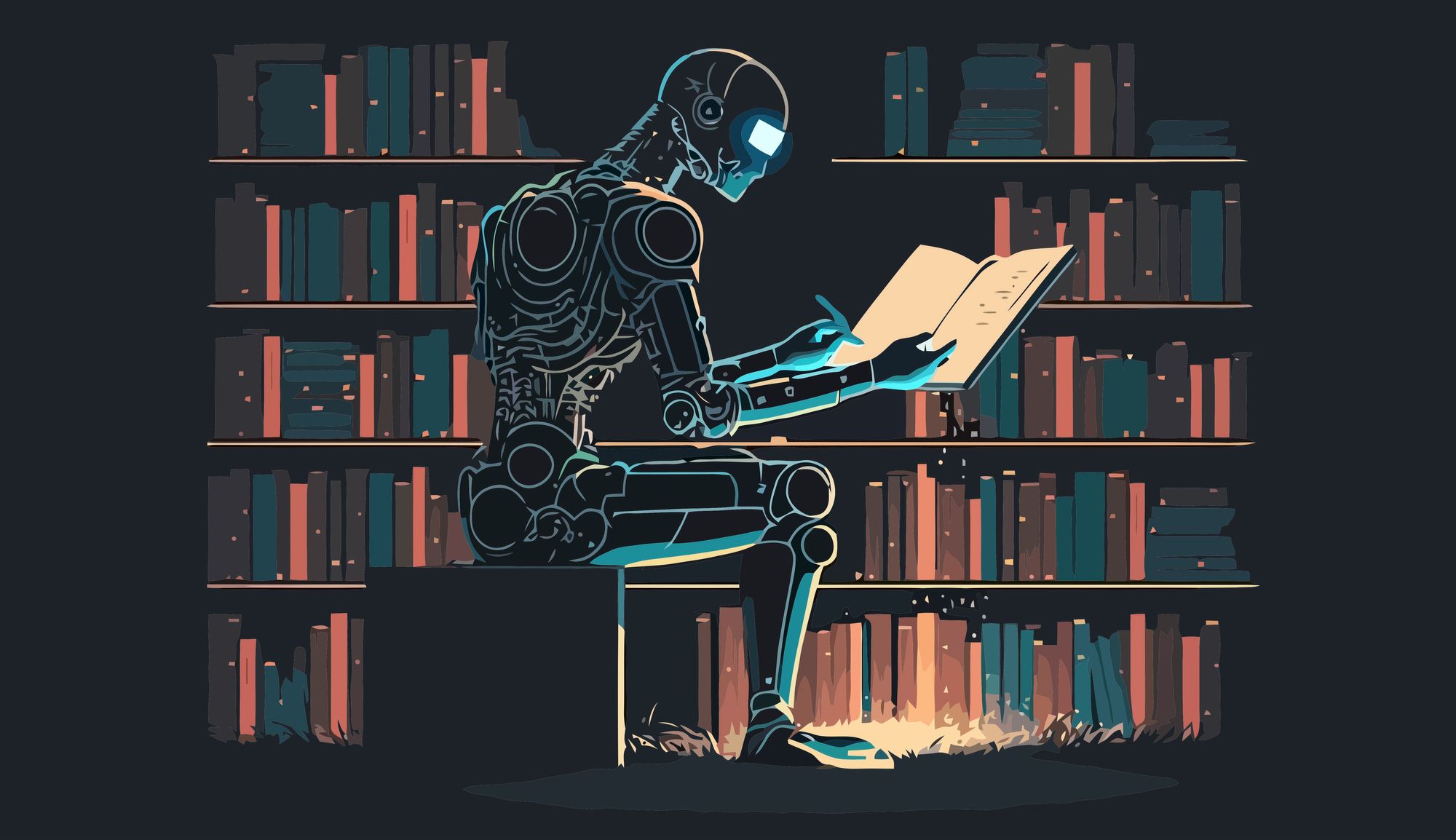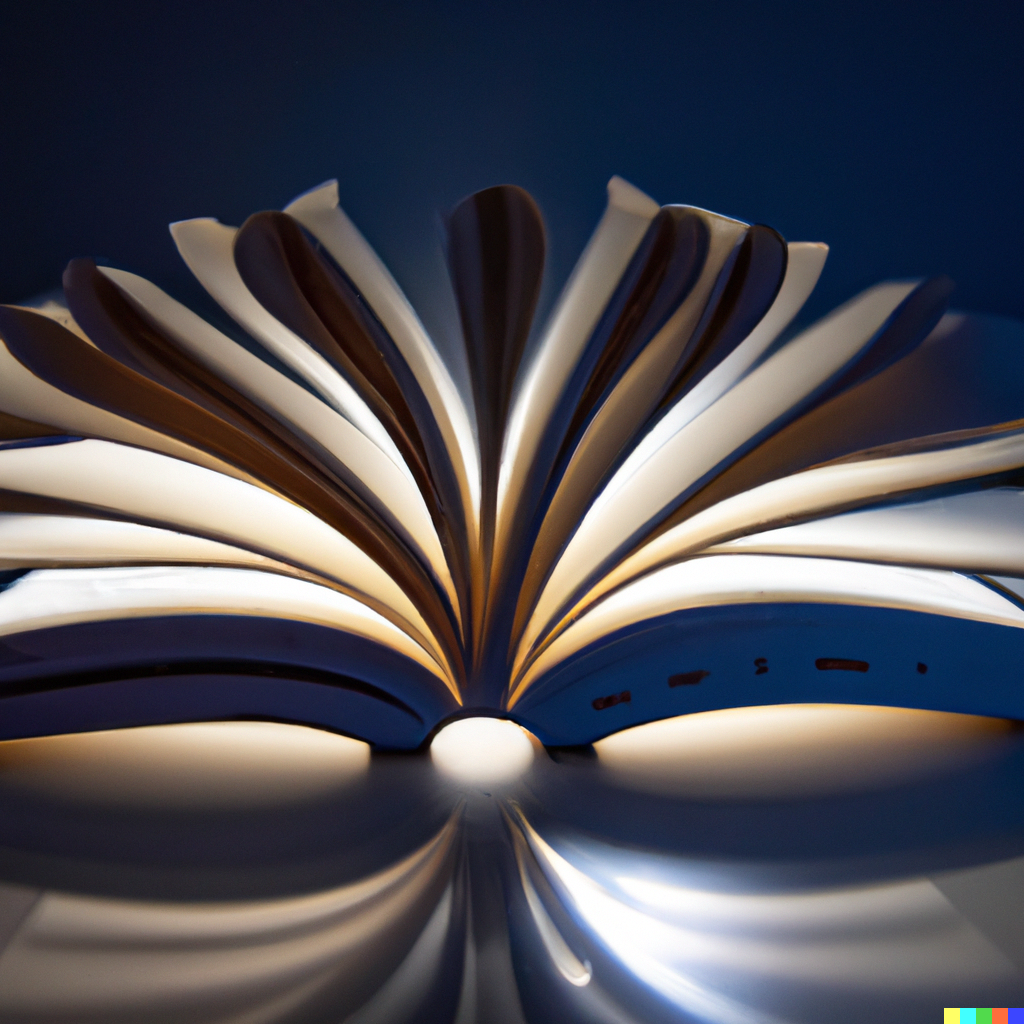Can ChatGPT write Nobel Prize-winning literature?
By: Xu Nuo
From: National University of Singapore
The rapid development of creative AI has been making innovative breakthroughs in text generation. AI has already made a huge stride in factual text generation like financial reports, news, and advertisements (Van Heerden & Bas, 2021). According to Bloomberg, a third of its financial contents are written with the assistance of AI tools, known as Cyborg, to extract data from plenty of financial reports (Van Heerden & Bas, 2021). Besides non-literature texts, AI has also made groundbreaking progress in literature, an area that has been long considered the distinctive essence of human beings (Thornhill, 2019). The recent boom of e-books written by ChatGPT on Amazon is an obvious instance (Bensinger, 2023). Even experts predict that AI would be able to write a bestseller novel of the New York Times by 2049 (Brambilla Hall, 2018).
The examples above collectively demonstrate how AI has been transforming the literature landscape and subverting our definition of literature. This article will discuss the development and the mechanism of AI literature generation, the pros and cons of literary AI, and finally trying to answer the question of how AI will subvert or expand the original definition of literature.

image cited from: https://www.shutterstock.com/image-vector/ai-scientific-research-automates-laborious-timeconsuming-2286457493
Definitions and development of literary AI
Literature is referred to imaginative and innovative works, a broad terminology including a wide range of genres not limited to poems, short stories, and novels (Todorov & Lyons, 2007). The literary AI discussed in this section covers literature either generated independently by AI or jointly created by humans and AI.
Algorithmic composition seems like a recent innovation; however, authors have started to adopt automatic text or plot generators to aid their creation of literature since the early 20th century. These writing assistants could help with brainstorming plots, creating characters, and arranging tensions by shuffling and randomly selecting various story elements like events and characters’ personalities. The final output would be a randomly selected permutation of several plot components (Columbia University Libraries, 2022). For instance, the Plot Genie, invented by Wycliffe Hill in 1936, could generate a story framework in five minutes at a spin of the wheel. By randomly choosing numbers or spinning a wheel, authors could be offered “one locale, some characters, one love obstacle, three complications, and one crisis before the final solution”, which reveals the underpinning narrative logic of this plot generator (Columbia University Libraries, 2022).
Moving forward, databases and scrapbooks for writing which store inspirations and elements extracted from real-life experience were further attached with plot generators, paving the way for the invention of literary AI. Since the 1950s, computer scientists started to invent algorithmic text generators, adopting two computation methods, frame-based and grammar-based (Columbia University Libraries, 2022).
No matter what diversion the approach is, the underlying mechanism of literary AI is homogenous, the entire process of which could be divided into three steps, human programming the codes, machine learning and deep learning, and finally AI producing the outputs to mimic human literary languages. Examples like Masterman’s Haiku Generator and Sentiment-controllable Chinese poetry generation could demonstrate how it works. By feeding in 5000 emotion-labeled poems, it could generate “fluent and coherent” poems and satisfy the human sentiment requirements as well (Shao et al., 2021).

image generated by DALL·E 2
Advantages of AI Writing literature
AI has been deeply embedded in the creation of all literary genres. As for poems, experts could not distinguish between AI-written sonnets and Shakespeare ones, while tutorials about how to draft a novel book by ChatGPT have been springing up across online platforms. However, just like any other technological improvement, the vibrant development might cover some potential risks to be noted. The following paragraphs will elaborate on both pros and cons of AI writing literature.
The biggest pro-AI authorship reason is its efficiency in exponentially speeding up the process of creating literature. Assisted with AI automation literature generators, it only takes authors several hours from conception, composition, to publication. One author Frank White demonstrated how he wrote a novella in one day simply by providing basic ideas and placing orders and suggested that everyone with the assistance of literary AI could publish 300 novels in one year (Bensinger, 2023). Also, by using ChatGPT, an AI image generator, and orders like “write a bedtime story about a pink dolphin that teaches children how to be honest,” Kamil Banc published his children's book in only four hours (Bensinger, 2023).
Secondly, the implication of AI literature generators significantly increases the accessibility of writing literature for everyone, regardless of their literature foundations. Compared with the previous era, literature is no longer an exclusive privilege for authors with higher education and literacy, meaning that writing literature is much more achievable with AI facilitating the literary transformation from conception to composition. As long as you have an idea, a storyline, or simply the name of the leading character, just by typing prompts in ChatGPT and continuously asking it to refine the answers until you are satisfied, everyone could “write their original literature.” As the entry barrier to literature creation has been lower, the increasing number of authors could enormously contribute to divergent perspectives and experiences, enhancing diversity and equality of literature authorship.
Downsides of AI writing literature
However, risks arise concurrently under the ambiguous and controversial definitions of AI authorship, the largest risk among which is the dispute of whether copyright should be attached to the AI-written literature.
As discussed above, to generate literary texts automatically, AI needs to be fed with numerous existing literature examples written by humans for machine learning, through which AI could automatically train itself and make decisions on its own. After deep learning, human authorship of the digested works would be removed from the final output of AI, and then AI authorship would be established, which means that AI could generate its own literary creations. However, is AI really the author of its final output? Or is it the numerous human authors who provide their literature for AI training that are the authors? And the extended question is how the copyright should be assigned to either authorship.
Indeed, copyright is not just a protection of works from piracy, it serves two other main functions, responsibility, and incentives for innovation. With copyright comes responsibility, which refers to taking full charge of punishments, rewards, and backlash of your works (Gervais, 2020). If subjected to punishment, authors would be more cautious about their publications with better self-discipline, avoiding plagiarism and ghostwriting. However, as AI acquires its writing ability through digesting and mimicking literary texts written by an enormous number of human authors, it is difficult to claim that AI could take full responsibility for every output they generate, leading to regulatory risks like copyright infringement or violations of social ethics.
Apart from responsibility, copyright could also incentivize innovation, motivating the creation of higher-quality literature. Compared with humans, this incentive might have significantly less value for AI, absence of encouragement effect for AI to constantly improve creativity and literature quality (Gervais, 2020). There are already many concerns about the overwhelmingly mass production of poor-quality AI-written works, which not only could threaten the place of existing writers (Bensinger, 2023) but also might make intellectual “noise” on a large scale, according to Shannon’s information theory (Gervais, 2020). As low-quality literature lacks intellectual transformative ability, AI-generated works might end up distracting the cultural signals of the current era and decreasing the cultural signals we send to future generations (Gervais, 2020).
As pointed out by Rebecca Tushnet, the reason why creativity is merit is not just because of the results, but more importantly, the whole creation process of understanding and improving human conditions. The fundamental interrelation of humanness and authorship emphasizes the very point of literature, which is human communication and sentimental expression. It’s a preservation and refinement of human situations, rather than romanticism or chauvinism of human privileges (Gervais, 2020).
To sum up, AI-written literature brings us increasing market opportunities powered by its higher productivity and easier accessibility for the public, while the complexity of copyright could lead to potential regulatory risks and less motivation for innovation.
Craft or commodity? What is the true meaning of literature?
To conclude this section, the question of whether the presence of AI would expand or subvert the definition of literature would be discussed.
There has been a long-lasting debate about how essential literary techniques or patterns are to literature. Some claim that it is the techniques rather than human inspirations that shape literary content (Columbia University Libraries, 2022), while others still insist on the central position of human intuition in literature. Although good literature truly adopts literary devices for a better presentation of the contents like the techniques used in Shakespearean texts are complicated enough for people to study until today, overemphasizing devices could transform literature into a pure commodity, which could be mass-produced by storytelling AI by following rigid patterns and flows. But storytelling is not literature. Literature is not just about stringing together sentences and following the steps of exposition, climax, risk, and resolution. What is more critical about literature is its expression of the richness and complexity of human emotions, the reflection of complicated human situations, and most importantly, the self-awareness and subjectivity of perceiving the surrounding world.
According to Charles, literature is the representation of human interests in artistic prose or verse (Kent, 1895). Although we could call AI an experienced storytelling writer, the emerging presence of AI still could not thoroughly remove the humanness of literature, at least not soon.
Reference
Bensinger, G. (2023, February 21). Chatgpt launches boom in ai-written e-books on Amazon. Reuters. Retrieved April 9, 2023, from https://www.reuters.com/technology/chatgpt-launches-boom-ai-written-e-books-amazon-2023-02-21/
Brambilla Hall, S. (2018, March 1). Ai will write a best-seller by 2049, experts predict. World Economic Forum. Retrieved April 9, 2023, from https://www.weforum.org/agenda/2018/03/timeline-of-creative-ai/
Columbia University Libraries. (2022). Literary ai. Literary AI. Retrieved April 9, 2023, from https://literaryai.library.columbia.edu/
Gervais, D. J. (2020). The Machine as Author. Iowa Law Review, 105(5), 2053+. https://link-gale-com.libproxy1.nus.edu.sg/apps/doc/A634680431/LT?u=nuslib&sid=summon&xid=8ad14505
Kent, Charles W. “What Is Literature? An Attempt at a Definition.” The Sewanee Review, vol. 3, no. 3, 1895, pp. 307–313, www.jstor.org/stable/27527848.
Shao, Y., Shao, T., Wang, M., Wang, P., & Gao, J. (2021). A sentiment and style controllable approach for Chinese poetry generation. Proceedings of the 30th ACM International Conference on Information & Knowledge Management. https://doi.org/10.1145/3459637.3481964
Thornhill, J. (2019). AI and literature: the muse in the machine. FT.Com, http://libproxy1.nus.edu.sg/login?url=https://www-proquest-com.libproxy1.nus.edu.sg/trade-journals/ai-literature-muse-machine/docview/2270287826/se-2
Todorov, T., & Lyons, J. (2007). What is literature for?. New Literary History, 38 (1), 13–32.
Van Heerden, I., & Bas, A. (2021). Viewpoint: AI as author – bridging the gap between Machine Learning and literary theory. Journal of Artificial Intelligence Research, 71, 175–189. https://doi.org/10.1613/jair.1.12593



